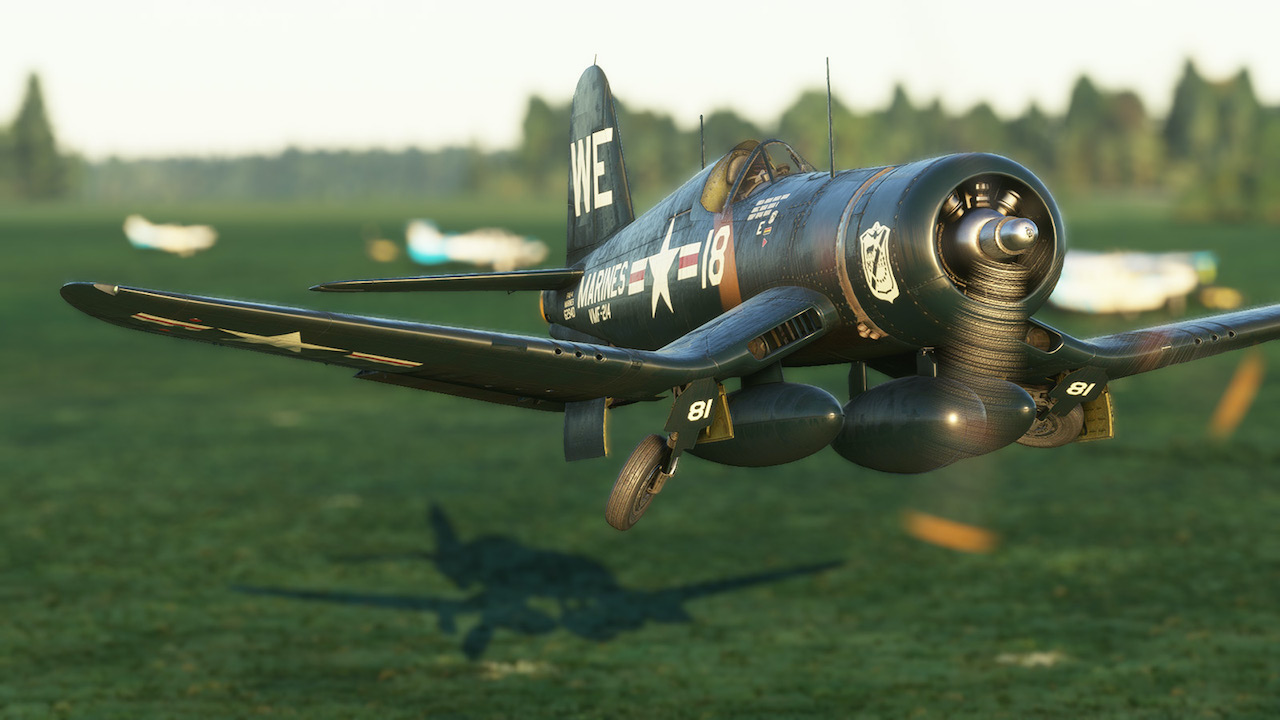– UI overhaul – aircraft revised to be compatible with modern tooltips & interactions
– Collimated gunsight
– FDE adjustments in response to suggestions and concerns
– Carrier compatibility added to tailhook
– Sound update & fixes
– Exterior lighting changes
– Instrumentation changes:
– CHT behavior change – cowl flaps are needed with aircraft at idle on ground, where they have about 25 – 30C influence. Cooling effect of airflow remains excessive and is unchanged at this time.
– Compass changes to correct provide compass pointer behavior as per Kollsman Mark 10 Compass info: thin needle is a compass needle, card is fixed, double bar pointer changed to retain ADF functionality.
– Engine now doesn’t blow up until temperatures rise above 260C for a longer period of time
– Parking brake interaction removed from tailhook
– Canopy rail clipping fixed
– Lockout added to gear lever prevent inadvertent gear collapse when moving lever to speedbrake position while on the ground.
– Pre-cutoff’ mixture lever position added to help prevent inadvertent movement of mixture lever to idle cutoff.
– Tail wheel lock set when spawning on runway.
– Minor model fixes
– Manual fixes and updates
It’s really no surprise that such feats required an exceptional aircraft, which the Corsair indeed was. Powered by the 2000 hp R-2800 Double Wasp coupled to a huge three blade propeller that measured 13 feet and 4 inches, the aircraft was a fair bit faster than the F6F Hellcat and only slightly slower than the P-47 Thunderbolt, with the difference more than acceptable considering that top speed on the P-47 was reached at an altitude of 30,000 feet, while the supercharged Corsair reached it’s maximum speed at 19,900 feet!
Our Corsair is loosely based on a FG-1D that was produced too late for active service in WWII; BuNo. 92132 spent it’s naval career in the Reserves before it was retired in 1957. Brought back to life in the 70’s for a brief stint in the television show Baa Baa Black Sheep (later syndicated as Black Sheep Squadron), this particular aircraft then languished again for a few decades before being acquired by the Tri-State Warbird Museum in Batavia, Ohio, where it is now being lovingly restored to original condition.

